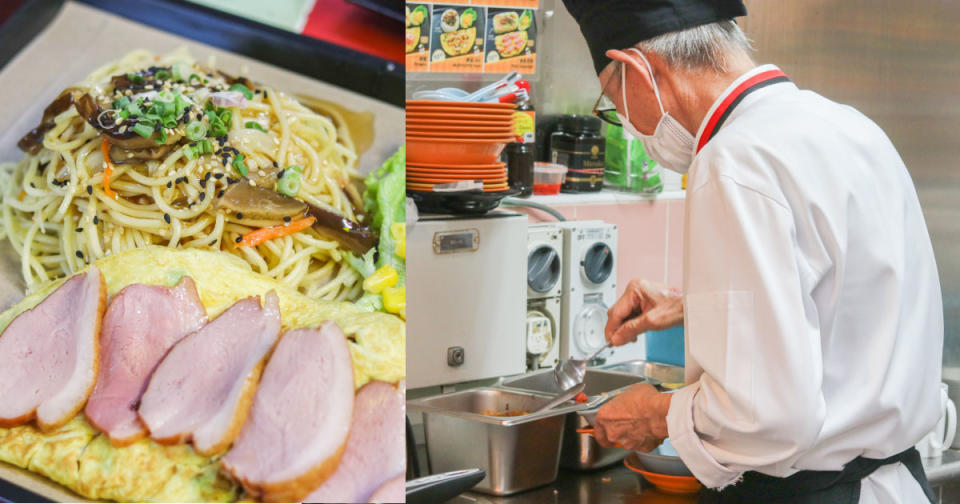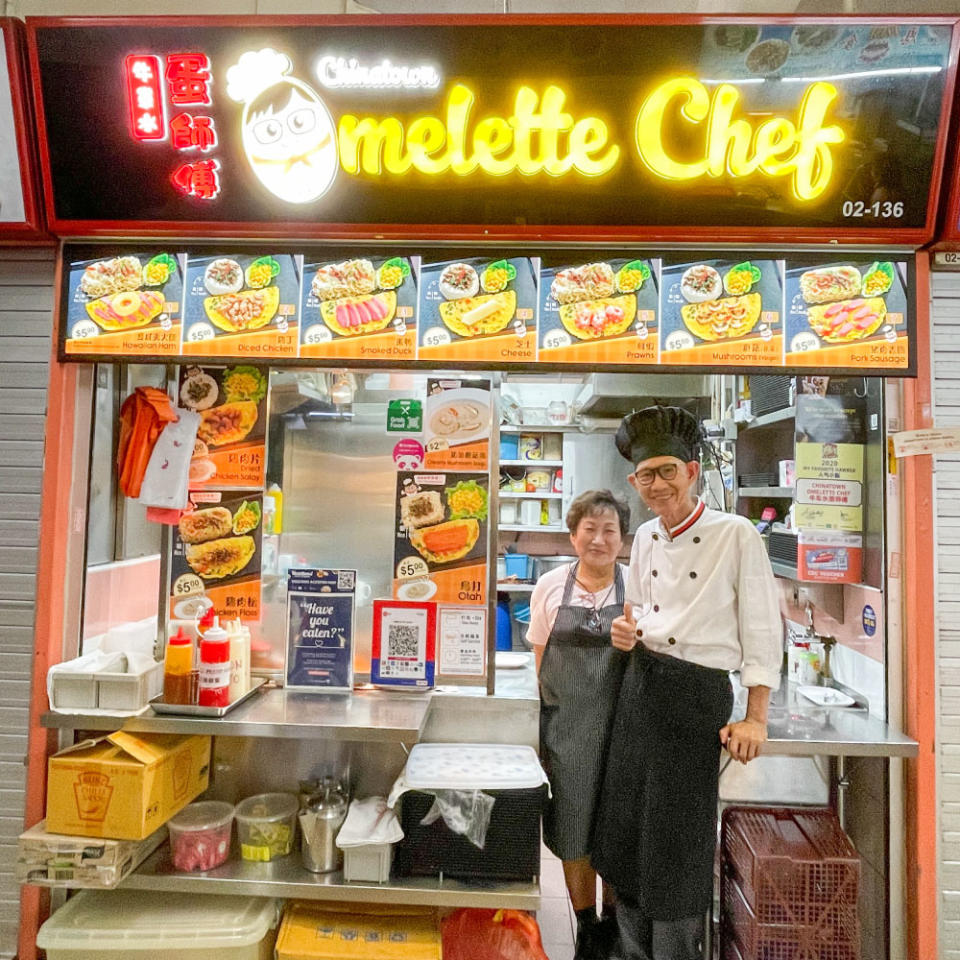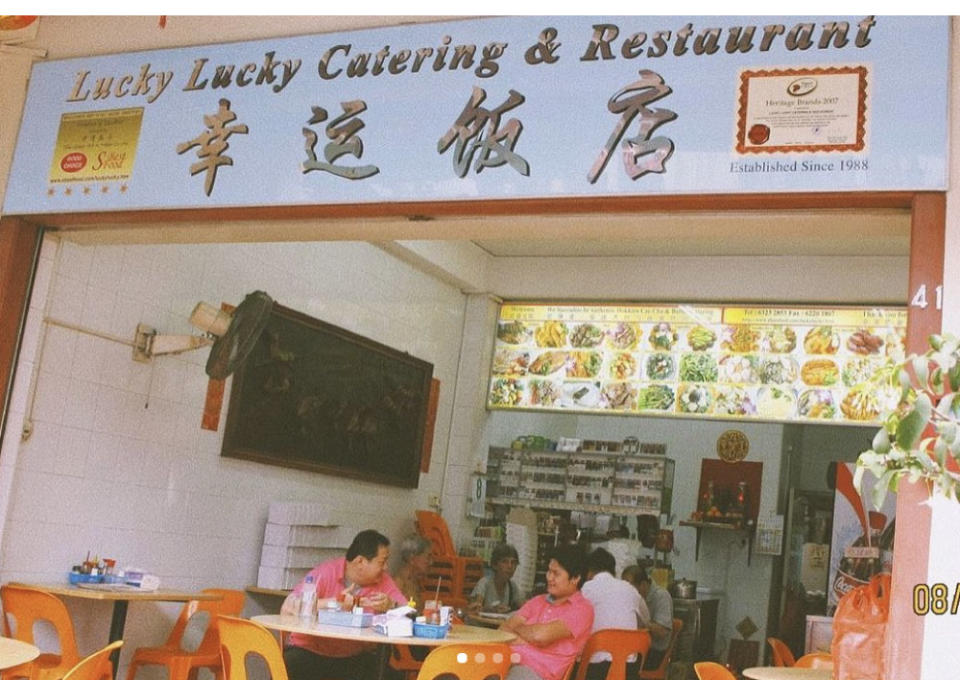Adapting to stay afloat — elderly hawkers’ struggle to embrace a digital lifestyle
I’m pretty sure the ‘new normal’ lifestyles we’ve had to adopt in light of COVID-19 have now simply become ‘normal’. It’s been a year since we’ve had to undergo Circuit Breaker, and our days since then have been filled with the uncertainties of multiple Phase 2 (Heightened Alert) measures. These measures have followed a slew of various dine-in restrictions, leaving elderly hawkers more vulnerable than ever.

Despite local support from Singaporeans on various social media platforms such as Instagram, Facebook, and Reddit, many elderly hawkers still fall through the cracks, even if they’ve transited successfully to online platforms. Mr Francis Lai, who owns Omelette Chef in Chinatown Complex with his wife, is a prime example of an elderly hawker who has embraced the digital lifestyle by putting their business online, but still yielded little results.

He runs a stall selling a variety of fusion-style omelette dishes paired with pasta or rice, such as Omelette with Smoked Duck (S$5), Omelette with Chicken Satay (S$5) and more. Despite being an elderly hawker, Mr Lai managed to integrate GrabFood and foodpanda into his business. However, what many Singaporeans fail to realise is that without the proper tools for advertising, transitioning to an online delivery platform does not yield much even if it’s a gargantuan step to take for elderly hawkers, something that Mr and Mrs Lai have been struggling with.

That’s not all; prior to Omelette Chef, Mr and Mrs Lai had been running a business selling herbal soup, but gave it up for two main reasons when the COVID-19 downturn first hit—they wanted something easier to tapau, but also wanted to revamp their menu to something that would appeal to the younger generation.

He wanted something that could appeal to both the young and old, whilst selling food that would minimise food wastage, the latter of which was a struggle when they were selling herbal soup. Despite adopting a customer-centric approach and putting their business on online delivery platforms, Mrs Lai admitted that their revenue had still gone down by half.
The bane of a digital lifestyle comes in many forms, especially to elderly hawkers. Not only are they unable to advertise creatively, but some of them experience a language barrier that averts their transition to online delivery platforms. The owners of Lucky Lucky Catering and Restaurant have opted not to join online delivery services because of the hefty platform fees. The dwindled revenue accompanied by a significantly lowered customer base acts as a deterrent for many F&B owners when it comes to exploring various mediums to expand their customer base on profit-driven online delivery platforms.

Moreover, all food delivery apps operate primarily in English, something that elderly hawkers struggle with, especially if they are illiterate or only speak in dialect. It’s for this reason that the owners of Kallang Cantonese Live Prawn Noodle are not on any delivery platforms and rely on a customer base consisting of those who make physical visits to their store. Most hawker stalls are often run by one or two people at a time, which means that they may not always have the manpower and resources to channel into creating an online presence the way that larger food chains do.

While it is easy to introduce a digital lifestyle to hawkers, in theory, the fact remains that after the first push in that direction, most hawkers still struggle because they simply aren’t tech-savvy enough to keep a platform up and running. The owners of Sheng Ji Fishball Noodle have cited this as their main barrier to entry on online delivery platforms, a recurring problem that more hawkers face. They are forced to rely on organic visits to the hawker centre, even if those numbers dwindle in the light of ever-changing restrictions and guidelines.
A common misconception is that having more elderly hawkers on delivery platforms would help boost their sales, but fail to realise that this can be a double-edged sword if these hawkers do not know how to optimise these sites for maximum gain or if the barriers of entry are simply too high. Singaporeans have tried to do their part in a multitude of ways, but perhaps nothing can truly one-up an organic interaction between patron and elderly hawkers. Many of them have bravely taken dining restriction setbacks in stride through embracing digital transitions, but ultimately, the onus is upon us to keep our local hawker culture alive.
Other articles you might like:
Behind the wheels in Phase 2 (HA): Taxi drivers’ battle for business and mealtime routine
Belanja a Meal 2.0: Support elderly hawkers & underprivileged households at the same time
The post Adapting to stay afloat — elderly hawkers’ struggle to embrace a digital lifestyle appeared first on SETHLUI.com.

